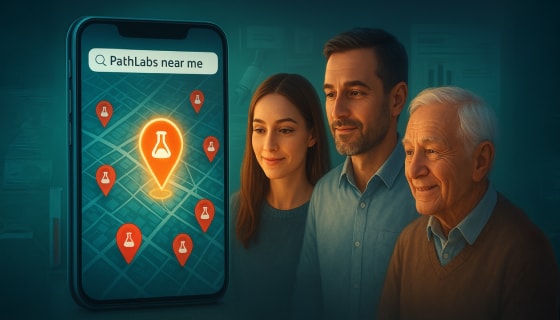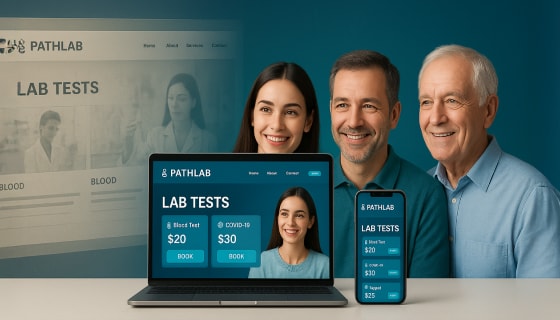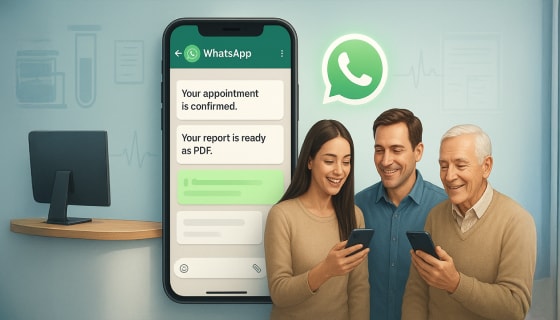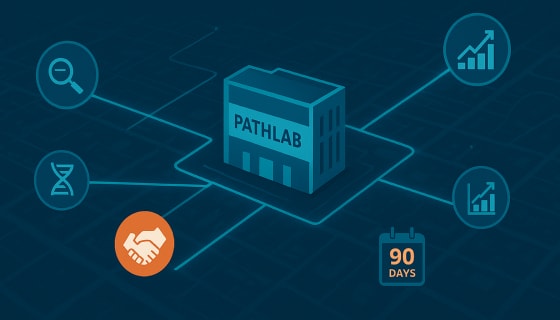Reconnecting with patients who have drifted away from your practice isn’t just about filling your calendar — it’s about rebuilding trust and reinforcing the relationships that once brought them through your doors. Your existing patient list holds more than just historical data; it’s a rich source of opportunity for meaningful engagement and long-term loyalty. The key to reactivating these patients lies in sending the right message at the right time. Thoughtfully crafted patient re-engagement campaigns, guided by patient behavior and feedback, can gently remind them of your value and bring them back into the care continuum, without overwhelming or alienating them.
Let’s explore how to transform your existing patient list into your most significant growth asset, identify signs of disengagement, select the appropriate communication channels, and craft specialty-specific messages as part of a healthcare re-engagement strategy that drives tangible results. This patient marketing strategy will help you reconnect with lapsed patients, nurture those relationships, and create lasting loyalty.
Why Your Existing Patient List is Your Biggest Growth Asset
Building and maintaining a relationship with current patients should be at the core of your practice’s growth strategy. After all, it’s more cost-effective to retain a patient than acquire a new one. Research shows that existing patients are more likely to schedule future visits, purchase services, and recommend your practice to others.
Yet, many practices overlook the potential of their existing patient list, instead choosing to focus on acquiring new patients. By running well-executed re-engagement campaigns, you can turn your inactive or lapsed patients into valuable, long-term clients.
What is a Re-Engagement Campaign?
A re-engagement campaign is a targeted marketing effort designed to bring back patients who have lapsed or are no longer actively engaging with your practice. These campaigns can include reminders, special offers, follow-up messages, or personalized outreach efforts to encourage patients to return.
By utilizing various communication channels, such as email, SMS, or WhatsApp, and crafting targeted messages for specific patient segments, you can reestablish communication and reignite their interest in your services. These campaigns are automated, making them scalable and effective at reaching a large number of patients without overwhelming your staff.
Definition and Real-World Healthcare Use Cases
Re-engagement campaigns in healthcare can take several forms. For example, a dental practice might run a campaign targeting patients who haven’t scheduled their next cleaning, or a physiotherapy clinic might reach out to past patients who were due for follow-up treatment after an injury.
Real-world healthcare use cases include:
- Orthopedic clinics are sending personalized reminders to patients who haven’t had a check-up after a joint replacement surgery.
Pediatric offices are reminding parents about upcoming vaccinations or health screenings for their children. - Gynecology clinics are reaching out to women for routine health checks or screenings that are past due.
These campaigns focus on meeting patients where they are, providing value, and encouraging them to return to the practice.
Signs a Patient Has Lapsed And How to Identify Them
Understanding the signs of a lapsed patient is crucial to targeting the right audience with your re-engagement campaigns. A lapsed patient is anyone who hasn’t interacted with your practice within a specific period, whether due to not attending a follow-up visit, failing to schedule a routine check-up, or not responding to past outreach.
Here are some key indicators:
- Time since the last visit: If a patient hasn’t returned for a specified period (e.g., 6 months or a year), they may be considered lapsed.
- No interaction or response: If there has been no engagement with your email newsletters, appointment reminders, or follow-up communications, that’s a clear sign they may be slipping away.
- Lack of appointment bookings: If a patient who previously had regular appointments is no longer scheduling them, it could indicate that they’ve lost interest or forgotten about your practice.
By leveraging practice management software and CRM tools, you can easily track and segment patients who haven’t engaged recently. This allows you to target them with specific re-engagement messages.
Email vs. WhatsApp: Which Channel Works Best?
When choosing the right channel for your re-engagement campaigns, it’s essential to understand which platforms your patients prefer and which will yield the best results. Whether it’s email marketing, SMS campaigns, or social media outreach, each channel offers unique benefits in terms of patient reach and engagement. By leveraging data from previous interactions and patient behavior insights, you can tailor your messaging to resonate through the right medium. Utilizing the correct channels as part of your patient marketing strategy ensures that you’re connecting with lapsed patients where they’re most active, strengthening relationships, and increasing the effectiveness of your healthcare re-engagement strategy. This targeted approach maximizes the potential of patient re-engagement campaigns, helping to retain patients in the long term.
Email: Best for Detailed Information and Offers
Email remains one of the most widely used communication channels, especially for healthcare-related reminders, educational content, and special offers. It allows you to provide detailed information about your services, send health tips, or offer promotions in a well-organized format.
However, the main challenge with email is deliverability and open rates, which can often be lower than other platforms. That’s why it’s essential to have engaging subject lines, personalized content, and to segment your audience for more effective targeting.
WhatsApp: Best for Quick, Personal, and Immediate Communication
On the other hand, WhatsApp has gained significant popularity due to its instant messaging capabilities and high engagement rates. With its read receipt feature, you can be confident that your messages are being seen. WhatsApp is ideal for sending quick reminders, confirming appointments, and sharing links to easily book appointments.
It’s particularly effective for reminders and follow-ups because of its immediacy. Patients are more likely to open a WhatsApp message compared to an email, making it a fantastic tool for re-engagement.
Message Ideas to Win Them Back (By Specialties)
Here are some message ideas tailored to different healthcare specialties, ensuring your campaigns resonate with your target audience:
Example: Dental
Message:
Dear [Patient Name], it has been a while since we last saw you. We want to remind you that regular check-ups are crucial for maintaining good oral health. Call us at [Phone Number] or click [Link] to schedule your next cleaning today!
Example: Gynecology
Message:
Hi [Patient Name], just a friendly reminder from [Practice Name] that it’s time for your annual well-woman exam. Book your appointment today to stay on top of your health!
Example: Orthopedics
Message:
Hello [Patient Name], are you due for a follow-up consultation on your recent joint replacement surgery? We’re here to ensure you’re healing well. Click [Link] to schedule your next appointment with us.
Example: Pediatrics
Message:
Hi [Parent Name], it’s time for your child’s annual wellness check. We want to ensure that your little one grows healthy and strong. Book your appointment at [Practice Name] today!
How Often to Run These Campaigns Without Spamming
While re-engagement campaigns are effective, over-sending messages can lead to annoyed patients and unsubscribes. So, it’s crucial to find the right balance.
Here’s a general guide:
- First-time reminders: Send an initial message 2-4 weeks prior to the patient’s next scheduled appointment or health check. This allows patients ample time to respond while ensuring the appointment remains fresh in their minds.
- Follow-up reminders: If there is no response, send a gentle follow-up reminder 1-2 weeks later. Personalizing these reminders based on patient behavior can increase the chances of re-engagement.
- Re-engagement intervals: For patients who haven’t responded to previous messages, send a special offer or reminder every 3-6 months, depending on the nature of your practice. This keeps your clinic top of mind without overwhelming patients, ensuring that they don’t feel bombarded by constant messages. Patient retention and loyalty can be nurtured through thoughtful, spaced-out re-engagement efforts, improving the overall patient experience.
Tracking Engagement & ROI from These Campaigns
To honestly assess the success of your re-engagement campaigns, it’s essential to track key performance indicators (KPIs) that offer clear insights into how well your patient marketing strategy is resonating with patients. These metrics will not only help you measure the immediate impact but also refine your approach for ongoing success.
No-Show Rate
This is a critical metric to monitor as it directly reflects patient engagement and the effectiveness of your reminders. A high no-show rate indicates that your messages are not resonating with patients or that the timing isn’t optimal. By keeping a close eye on this, you can adjust your messaging or delivery channels, such as opting for text messages, phone calls, or email reminders, to ensure a more effective approach This provides you with actionable data to test various approaches and ensure higher patient attendance rates.
Reply Rate
The reply rate tracks how many patients interact with your messages, indicating their level of engagement. A strong reply rate shows that your message is engaging enough for patients to respond. If you’re seeing lower-than-expected interaction, it may be worth experimenting with different messaging strategies, such as personalizing the message more or providing an incentive for patients to reply. A well-crafted call to action (CTA) can boost responses and help you engage patients more effectively.
Reschedules
Rescheduling is a crucial metric because it indicates that patients remain interested in attending their appointments, but unforeseen circumstances may necessitate adjustments to the timing. Tracking appointment reschedules will ensure that you continue to reach the right patients. If you notice an increase in reschedules, you can use this data to fine-tune appointment availability or send timely follow-ups to encourage rebooking, ensuring that you keep patients engaged without losing track of them.
By diligently tracking these metrics, you’re not just gathering data; you’re actively learning from your patients’ behavior, which will guide you in tweaking your patient re-engagement campaigns, refining your timing, and selecting the most effective channels for reaching them.
This ongoing process helps you enhance the effectiveness of your campaigns, improving patient retention and ultimately boosting ROI. Whether it’s optimizing content for higher interaction or finding the best times to send reminders, each insight brings you closer to achieving your clinic’s growth objectives.
Conclusion
Re-engagement campaigns are more than just a marketing tool — they represent a meaningful opportunity to rebuild trust, strengthen patient relationships, and reinforce your commitment to quality care. In today’s competitive healthcare landscape, retaining existing patients can be just as valuable, if not more, than acquiring new ones. By identifying lapsed patients, understanding the reasons behind their disengagement, and reaching out with personalized, thoughtful communication, your practice can turn missed opportunities into renewed connections. Whether it’s a gentle reminder or a timely follow-up, every message contributes to building long-term loyalty and enhancing patient outcomes.
With the right strategies in place, healthcare providers can create re-engagement campaigns that truly resonate, driving patient retention, loyalty, and measurable growth. A well-designed approach can help bring patients back, fostering deeper connections and ensuring your practice moves forward.













